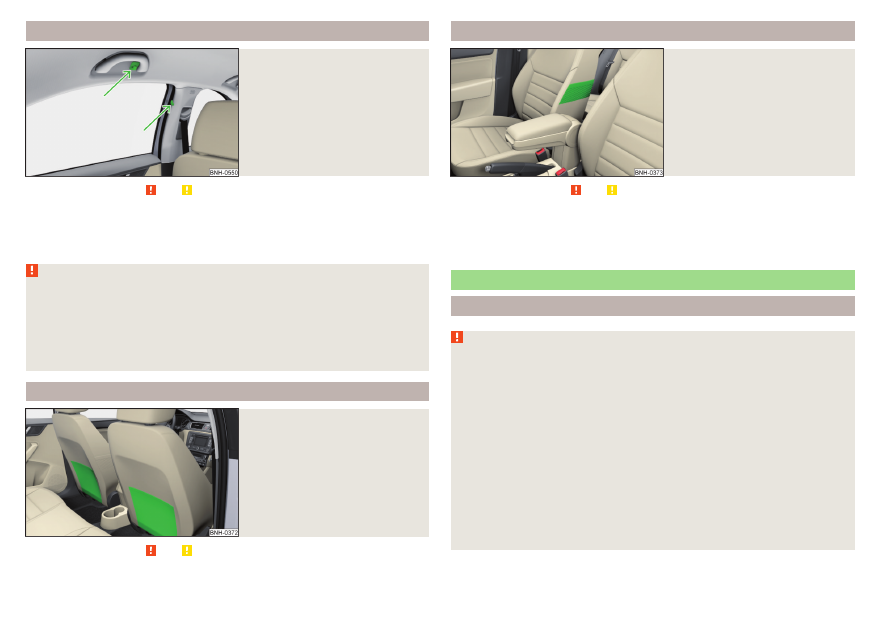Skoda Rapid (2019 year). Manual - part 5

Clothes hook
Fig. 89
Clothes hooks
Read and observe and on page 71 first.
The clothes hooks are located on the middle door pillars of the vehicle and on
the handle of the headliner above each of the rear doors
The maximum permissible load of each of the hooks is 2 kg.
WARNING
■
Never leave any heavy or sharp-edged objects in the pockets of the items
of clothing hung up - danger of injury.
■
Do not use hangers to hang up the clothes - there is a risk of restricting
the effectiveness of head airbags and a danger of injury from the hanger.
■
Make sure that any clothes hanging from the hooks do not impede your
vision.
Storage pockets on the backs of the front seats
Fig. 90
Map pockets
Read and observe and on page 71 first.
The map pockets are intended for storage of maps, magazines, etc.
Storage pockets on the inner sides of the front seats
Fig. 91
Storage pocket
Read and observe and on page 71 first.
The storage pockets are located on the inside of the front seats
and
are used to store small and light objects (e.g. mobile phones).
The maximum permissible load of each of the pockets is 150 g.
Electrical sockets
Introduction
WARNING
■
Do not place anything on the dashboard. These objects might slide or fall
down when driving and may distract you from concentrating on the traffic
– risk of accident!
■
Make sure that while driving no objects can enter the driver's footwell -
they could cause an accident!
■
Stow all devices safely during the journey to prevent them from being
thrown around the interior in the event of a sudden braking manoeuvre or
an accident – risk of death!
■
The devices may warm up during operation – risk of injury or fire!
■
Improper use of the power sockets and the electrical accessories can
cause fires, burns and other serious injuries.
■
The 12-volt sockets also work if the ignition is switched off. When leaving
the vehicle, never leave persons who are not completely independent, such
as children, unattended in the vehicle.
76
Operation